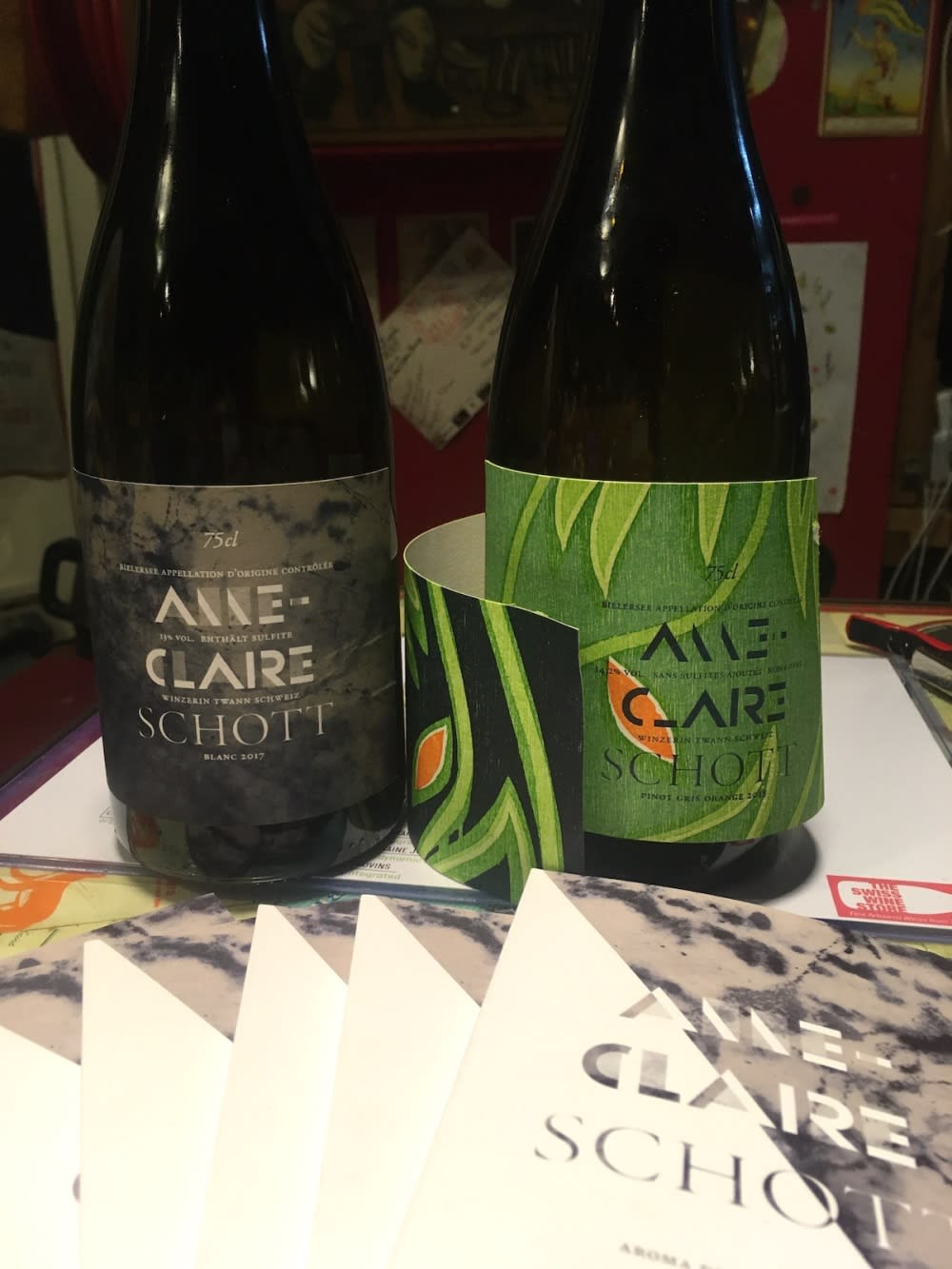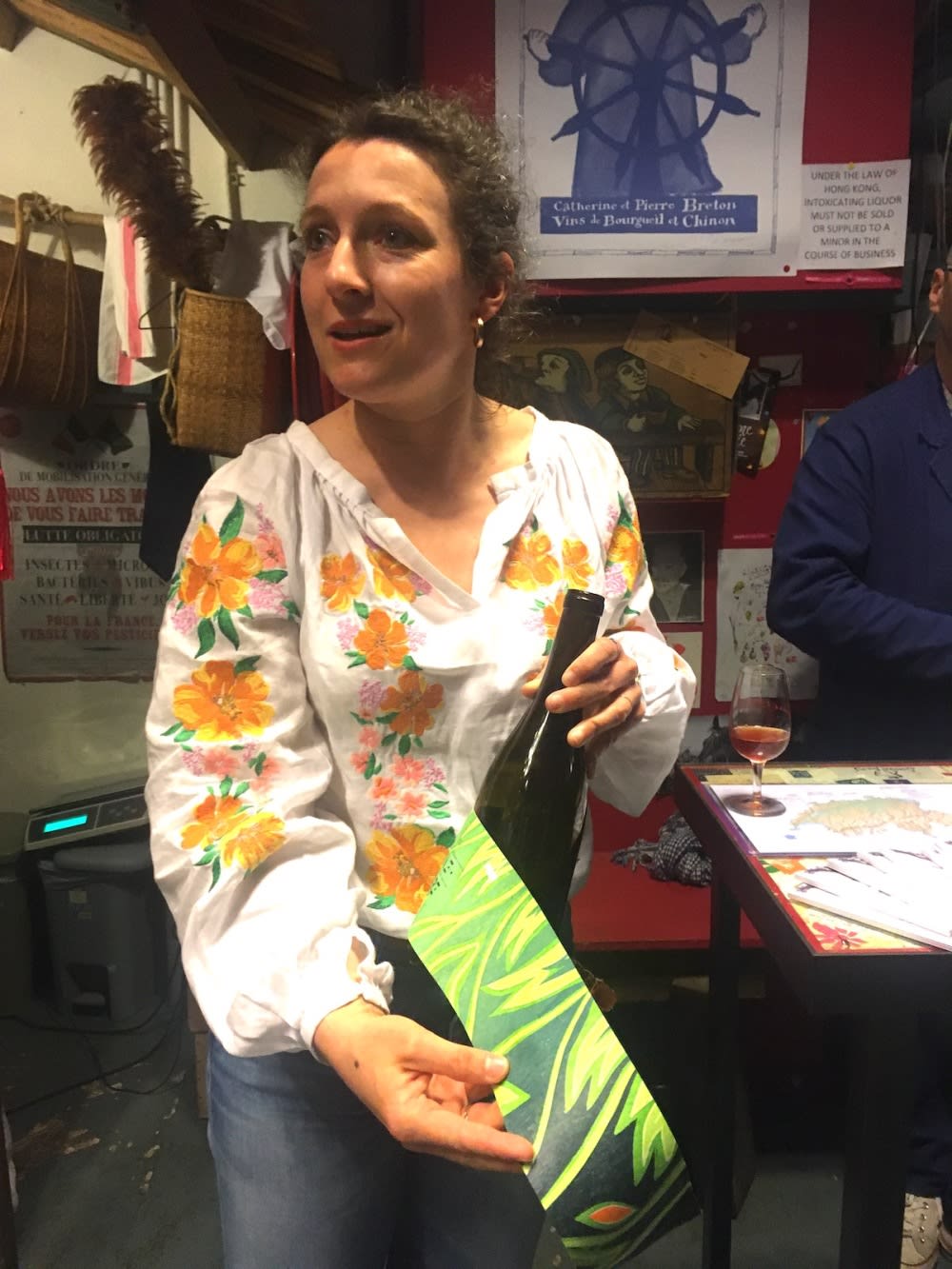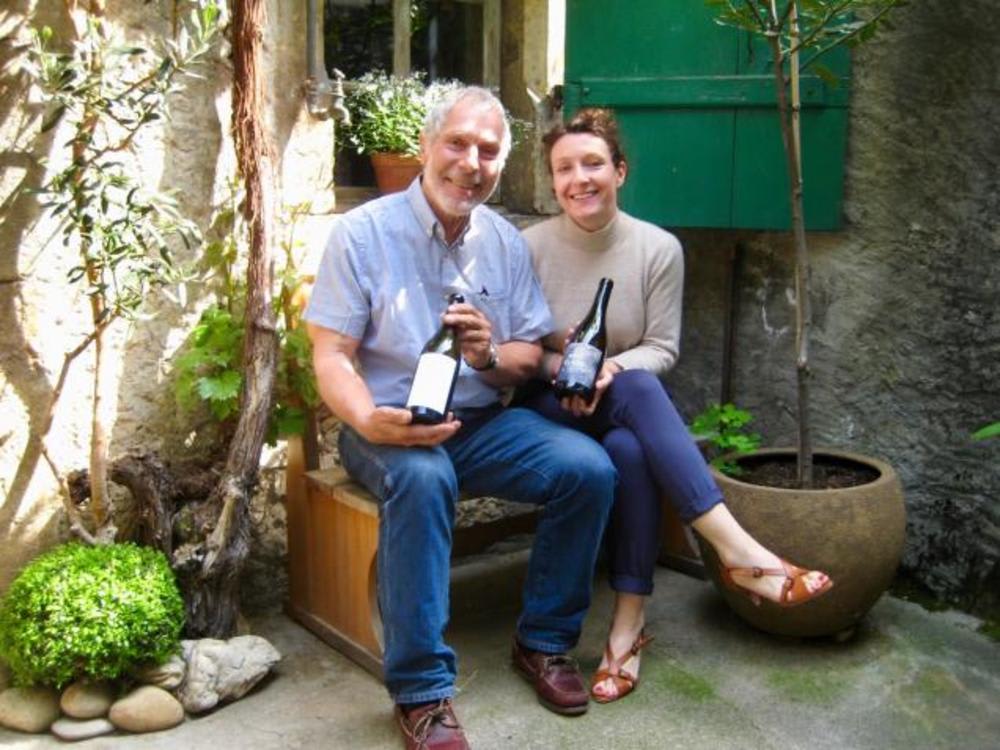Anne-Claire Schott is not your average winemaker. She studied art history and did not plan to join the family wine estate, Schott Weine, where her grandparents and parents were making conventional wine at their four-hectare vineyard at the foothills of the Jura Mountains, located in the Three Lakes region of Switzerland.
When she finally decided to follow in her father’s footsteps, she took a winemaking course at the highly regarded CHANGINS School of Viticulture and Enology before gaining experience at a large US winery. She also made it clear that she can run the business and make the wine the way she wants.
“Living in nature, we cannot intoxicate the land,” says Schott. The first thing she did when joining the business in 2016 was to convert the vineyard to be biodynamic. Biodynamic farming does not forgive mistakes, so she spends most of the time at the vineyard closely observing the grapes to make sure they are healthy. Not surprisingly, she is also a fan of natural wine. Schott believes that wine conveys culture, landscape and nature and that chemicals in vineyards and cellars rob wine of being the messenger. She calls herself a winegrower rather than a winemaker. 
Schott created her own series of natural wine under the name Aroma der Landschaft (Aroma of the Landscape), where she allows the wines to fully express themselves. The label was designed by a local artist to reflect her philosophy.
The first Aroma der Landschaft wine, Blanc 2017, is a white wine that only uses grapes grown next to the dry walls at the end of the rows on the steep vineyard. It is an unusual blend of six varieties (Chasselas, Pinot Noir, Pinot Gris, Chardonnay, Silvaner and Sauvignon Blanc) fermented together, but Schott doesn’t want to talk about varieties. To her, the wine is about the special microclimate under the stone walls where the grapes are more exposed to the sun. It has pleasant floral and white fruit aromas, fresh acidity and a savoury finish.
Still experimenting, Schott has expanded the Aroma der Landschaft portfolio by making wine in a different way and adding new wine every year. The year 2018 was the year of orange wine. Orange wine is white wine made using the skin-maceration red wine technique. It is food friendly because of its freshness, subtle aromas and structure. I find it particularly great with Chinese cuisine.
With three weeks of skin contact and fermentation in concrete eggs, Blanc 2018 has an extra dimension of fresh orange peel notes and a jasmine tea structure. Schott also made a Pinot Gris Orange 2018 with three weeks skin contact. It has an intricate nose and the same jasmine tea palate. A unique lithography label wrapped around the bottle unfolds to reveal information about the wine. 
At the moment, Aroma der Landschaft contributes to only 10% of total wine production. Most of the wine that Schott has made is still under her parents’ Schott Weine label. Asked if there is any difference between her father’s wine and her own, Schott says that Schott Weine is traditional and precise, while her wine is more freestyle, with different interpretations depending on the vintage. So what do her parents think? Well, her father is happily helping out at the winery and her mother still cooks for the staff.
In addition to Blanc and Pinot Gris Orange, Schott also makes a Pét-Nat (a slightly fizzy sparkling wine) and Mon Vieux Pinot Noir. She reckons that conventional wine is all the same and lacks spectrum. No doubt we will see more of Anne-Claire Schott’s natural wines on the market.
Schott Weine’s Aroma der Landschaft is available in Hong Kong at The Swiss Wine Store and La Cabane.
For more wine articles like this, like Foodie on Facebook











